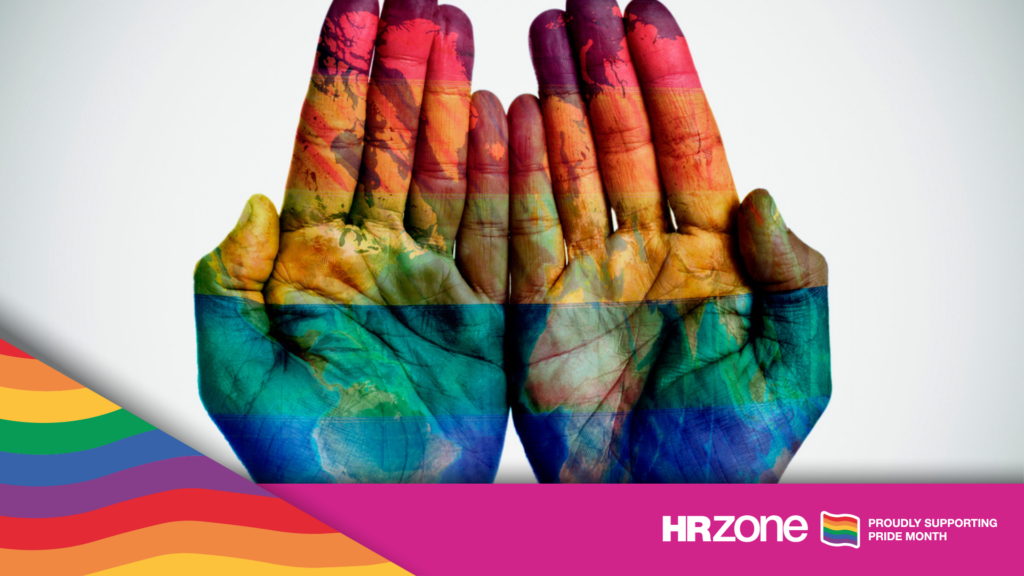In recent years, a lot more people have been coming out as nonbinary, and more countries and states have added third gender options of varying definitions. But being nonbinary is still often not widely understood or taken seriously as a gender identity in its own right.
There are few role models outside of show business and the lack of visibility can make it more difficult to relate to. Being nonbinary comes with its own challenges in life and at work, and there are lots of misconceptions and assumptions.
What does nonbinary mean?
Nonbinary is one of the ways to describe a gender identity that is not male or female. This could mean identifying as both, or as neither, or rejecting the male-female binary outright and identifying differently.
It feels much better to live your life as your whole self.
Being nonbinary is a gender identity in its own right. It is not a halfway house on the way to a binary decision. How people live with this identity, and which pronouns they choose, will be individual. Nonbinary does not mean bisexual (nonbinary is about who you are, bisexual is about who you are attracted to).
My nonbinary self-discovery
My journey to being fully open about being nonbinary happened in stages. I had my first gender conversation at age four or five in kindergarten (it was a Catholic kindergarten in rural Southern Germany – that conversation did not go well).
Puberty was a disappointment as I had secretly been hoping I’d turn into who I was meant to be, and that wasn’t female. I then pushed that topic away as I got on with education and with trying to build a life, a viable career and as I went on to live abroad.
On paper, I will have to keep pretending I’m female and my dead name (my former name) still needs to be put everywhere officially, which is painful and infuriating each time.
The gender identity topic came up again while working in the US in my early 30s. My employer at the time introduced support for gender reassignment so that restarted my inner search process. I ended up deciding not to transition, as I realised my ideal place is genuinely in-between (or neither).
I had a minor existential crisis when a theatre in New York sent a user survey that had ten options for gender. I spent an enlightening and confusing evening googling what all those were and how each would feel.
Nonbinary immediately resonated. I was out as being bisexual at work but didn’t dare to be out with my gender identity at the time quite yet.
Coming out at work
Coming out as nonbinary at work has been a very mixed journey, I was always very cautious but not cautious enough, and I’m still paying for the damages, literally and figuratively.
Until recently I kept a low profile. I then joined a company that prided itself on authenticity, so I was out and proud from day one. It was a complete and utter disaster.
As a global professional, you deal with lots of paperwork, usually involving at least two countries, and all of them have different views on gender and what is or isn’t possible.
I ended up being brutally bullied out of my job and lost nearly everything as a result.
I then went back into the closet for a few years to rebuild my life and career, pretty much from scratch. For my second attempt, I waited until I was stable and successful enough in my current role before venturing out again.
My employer and clients are very supportive, and that is a big relief. When I asked to be referred to with my new name ‘Lior’ it was a very positive experience. I can mostly be who I am right now.
The battle for official status
While I’m out at work and in most of my personal life about my identity, living as nonbinary officially is basically impossible.
As a global professional, you deal with lots of paperwork, usually involving at least two countries, and all of them have different views on gender and what is or isn’t possible, and under which circumstances.
Bring your whole self to work is a privilege. The reality is, LGBTQA+ folks often have less of the traditional support structures or emergency backups.
While Germany (where I was born) allows for name change if you change your religion (which I did), the bureaucratic process is so prohibitive and so staggeringly expensive that I am realistically not going to be able to see this through.
In my latest attempt on the name front, I tried to at least have “Lior” added as artist’s pseudonym, which got rejected on account of not being famous enough as Lior to justify this (my entire personal, professional and artistic life is as Lior, there is no public activity under my old name).
Even if I could officially have identity and name recognised, I would then still run into problems with every other country I’d be dealing with, or whenever I fill out a form with just male/female options.
If your life or work stretches beyond the country you were born in, this is still impossible to navigate – not to mention the security situation this will put you in in some parts of the world.
On paper, I will have to keep pretending I’m female and my dead name (my former name) still needs to be put everywhere officially, which is painful and infuriating each time.
How to be open about your nonbinary identity at work
If you are nonbinary and are considering coming out, I hope you can learn from my experiences. Here’s a few things to keep in mind before you take the leap:
1. Do your adult homework first
Stabilise your finances as much as you humanly possibly can. I cannot stress this enough. Get yourself into a stable housing situation that you can keep up if things get rocky.
Review your insurances and get covered for what you need, check your mortgage situation if anything needs reviewing there, before you start rocking the boat.
Find a community or group of friends that can hold you, particularly if you don’t have support from your family of origin.
Coming out is unfortunately still a risky step to take. If things go wrong, the road to rebuild some semblance of a life is long and often lonely.
Bring your whole self to work is a privilege. The reality is, LGBTQA+ folks often have less of the traditional support structures or emergency backups like a family or savings, and we often face series of setbacks or discrimination across other parts of life, too.
This means our emergency net needs to be much better crafted. Set yourself up as best as you can before you make any sudden moves.
Know what legal and other support you have available, and if anything goes pear-shaped, document everything.
2. Build your support community
Make sure you are in good standing where you currently work. Invest in your professional network as much as you can. Test the waters with trusted colleagues, your manager, HR, an employee resource group.
Find a community or group of friends that can hold you, particularly if you don’t have support from your family of origin. Find a place outside of work or home that you experience belonging in and where you can be you.
If you don’t have a family of origin to go this path with you, start building a network of “elders” and “siblings” for yourself.
3. Go at your own pace
It feels much better to live your life as your whole self. People love ‘interesting’ stories so they might push you to do things you aren’t comfortable with yet. It’s not your job to provide others with juicy stories.
Most people aren’t deliberately mean. This is still new for lots of people so they can be a bit clueless.
On the other hand, sometimes we have to be the elders we wished we had when we were young, and that will massively stretch our comfort zone. Sharing stories can be a part of that. You decide what you do and at what pace.
4. Prepare for ignorance
You might have to do a lot of education. Most people aren’t deliberately mean. This is still new for lots of people so they can be a bit clueless.
There are not enough relatable role models outside of showbusiness yet, so the more other nonbinary folks come into the conversation, the better.
5. Coming out loudly versus quietly
There is also a sizing question. People either come out very quietly, or very loudly. Oddly enough, I found louder to be safer.
After my first quiet coming out went so horribly wrong, I made the second one loud – I came out by running two sessions at two global conferences.
That is a brutally stressful way of doing it so I wouldn’t necessarily recommend that. The support in the L&D community was fantastic, and that gave me the extra protection I felt I needed to take this further and do more public things like changing the name I use.
Let’s connect
I hope my story raises awareness of gender diversity and helps other nonbinary people, wherever you are on your journey. If you’re a nonbinary person within L&D or elsewhere, please get in touch so we can all connect and start building a community!
In my second article, I explore what businesses can do to make their culture and environment more inclusive for nonbinary people.
[cm_form form_id=’cm_65a14c3f5da64′]






